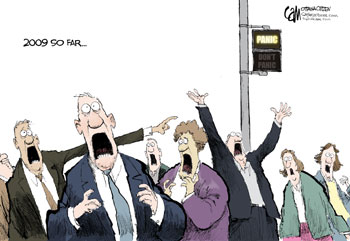
Despite our best efforts, all diseases have not been eradicated, and periodically, one gets out of control, or so it appears. The recent outbreak of H1N1 flu, popularly called the “swine flu,” at first appeared to have the potential to reach epidemic proportions, though the persistent throwing around of the term “pandemic” was undoubtedly excessive. Nevertheless, as with all dangerous communicable diseases, maximum caution to prevent the spread of this flu was certainly in order.
Sometimes, however, responses to outbreaks of diseases that bear exotic-sounding names are based more on hype than science. This is more apt to occur when a combination of government agencies and the mass media dominate the conversation, since neither sector generally demonstrates the unbiased discipline and dispassionate logic prevalent among other possible sources of disease-related information, such as privately funded healthcare providers.
The Centers for Disease Control (CDC) website (www.cdc.gov/h1n1flu/) on May 3 showed a tally of H1N1 cases; it listed 226 cases nationwide. The only death resulting from the disease had been of one child who had contracted the disease in Mexico and who died in Texas.
To put these figures into perspective, consider a report published online on May 1 by CNSNews. The report noted that in 2006 — the most recent year for which the CDC had compiled statistics — more than 56,000 people died from the flu in the United States. Also cited was a recent CDC study indicating that an average of 36,171 people died each year of flu in the United States from 1993 to 2003.
The report’s author notes the marked contrast between our federal response to this year’s outbreak as opposed to those in the past:
In 2005, the flu killed 63,001 people in the United States, according to the CDC. But that year the President of the United States did not use a prime-time news conference to admonish the American people that they must wash their hands, and the Vice President did not say he would not want his family to have to ride on a plane or a subway because someone might sneeze near them.
When a reporter from CNN interviewed Rep. Ron Paul (R-Texas), a medical doctor, on May 2, and asked him, “Are we over-hyping this? Meaning all of us — the media and the government,” Dr. Paul replied: “Yes they are. It’s overblown, grossly so.”
As to why some people might be promoting an overly aggressive governmental response to this potential crisis, Dr. Paul noted:
This idea that government has to come to the rescue I think it’s more or less a reflection that we have too many in government that like the idea that they have to justify their existence so … scare the people to death … then you can do what you want. If it’s an economic crisis, scare the people to death, then you can socialize the economy….We’re on the move to socialize medicine so we’re scaring the people and saying the only people who can save us will be the government.
An AP report released on May 4 noted that the so-called swine flu virus that has generated so much fear “is beginning to look a little less ominous.” The report quoted Dr. Peter Palese, a leading flu researcher at New York’s Mount Sinai Medical School, who said the H1N1 virus appeared to be similar enough to other common flu strains that “we probably all have some type of immunity.”
“There is no real reason to believe this is a more serious strain,” the doctor added.
Meanwhile, as we write, students went back to classes at St. Francis Preparatory School in Queens, New York, the place where cases of swine flu were first detected. The flu surfaced when a group of students from the school became ill after traveling to Mexico for spring break. The school has been disinfected, the sick students have recovered, and things have gone back to normal.
And all without the assistance of our omnipresent, beneficent federal government.



